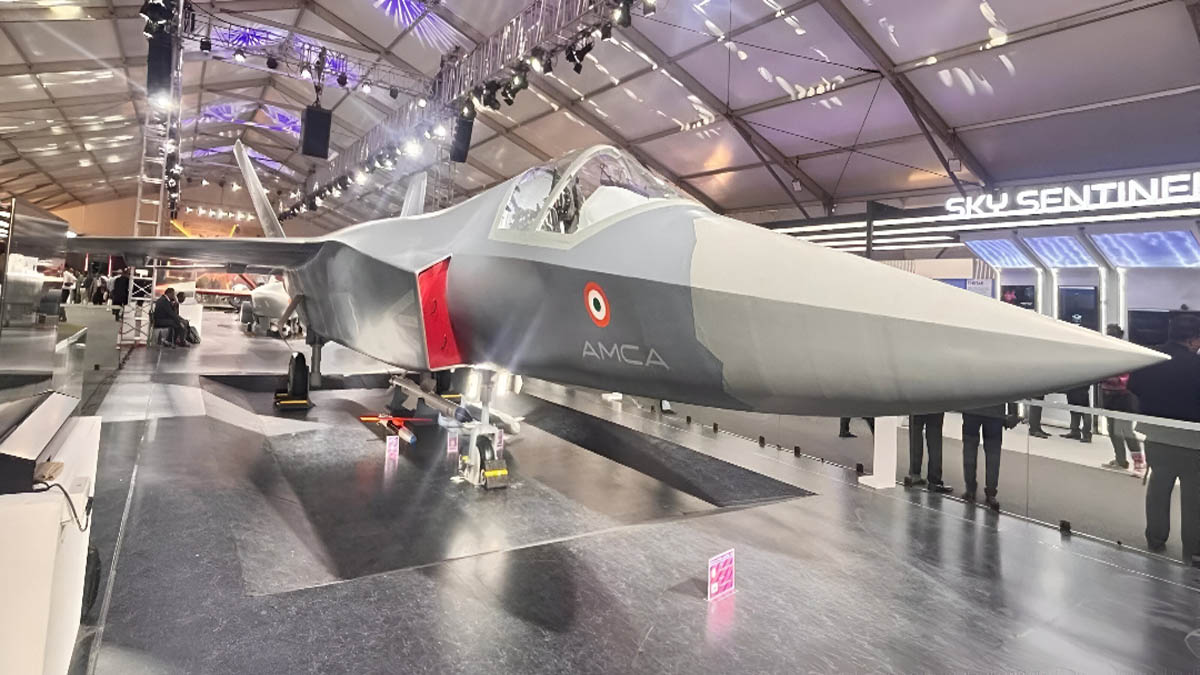Now Reading: India Unlocks Doors to Private Sector in Bid for Indigenous 5th-Gen Fighter Jet
-
01
India Unlocks Doors to Private Sector in Bid for Indigenous 5th-Gen Fighter Jet
India Unlocks Doors to Private Sector in Bid for Indigenous 5th-Gen Fighter Jet

In a landmark decision, India has opened the race to develop its ambitious Advanced Medium Combat Aircraft (AMCA), a fifth-generation stealth fighter, to the private sector. This move signals a significant shift in the nation’s defence manufacturing policy, aiming to accelerate the project and foster a more robust domestic aerospace industrial ecosystem.
Historically, the development and production of advanced military aircraft in India have largely been the exclusive domain of state-owned enterprises, most notably Hindustan Aeronautics Limited (HAL). However, the newly approved “execution model” for the AMCA programme champions a competitive approach, offering equal opportunities to both public and private sector companies. This allows private defence giants, either independently or through joint ventures and consortia, to bid for various aspects of the fighter’s design, development, and eventual production. Companies like Tata Advanced Systems, Larsen & Toubro, and Adani Defence and Aerospace are now poised to play a pivotal role alongside HAL.
The decision underscores India’s determined push towards “Aatmanirbhar Bharat” (self-reliant India) in defence. The AMCA is envisioned as a twin-engine, all-weather, multirole stealth fighter, designed for air superiority, ground strikes, electronic warfare, and suppression of enemy air defences. Its advanced features will include a low radar cross-section, internal weapons bays, sophisticated avionics, sensor fusion, and supercruise capability. The initial two squadrons of the AMCA Mk-1 are planned to be powered by American GE F414 engines, with subsequent Mk-2 versions aiming for a more powerful, indigenously developed engine through foreign collaboration.
The move comes at a crucial juncture, as regional geopolitical dynamics and the rapid advancements in military aviation by other nations, particularly China with its J-20 and J-35 stealth fighters, necessitate an accelerated pace in India’s defence modernization. While the AMCA is a fifth-generation project, with the first flight expected around 2026 and induction into the Indian Air Force (IAF) targeted for the early 2030s, the broader global landscape is already seeing discussions around sixth-generation platforms. This urgency has likely played a significant role in the government’s decision to leverage the agility and innovation potential of the private sector.
The estimated development cost for the AMCA project is approximately ₹15,000 crore, but the overall programme, including serial production, is expected to entail investments running into lakhs of crores. The Aeronautical Development Agency (ADA) under the Defence Research and Development Organisation (DRDO) will spearhead the programme through these strategic industry partnerships. An Expression of Interest (EoI) for industry participation is expected to be issued shortly, outlining the technical and financial criteria for potential bidders.
This opening of the defence sector to private players presents both opportunities and challenges. On the opportunity front, it promises to inject greater efficiency, foster innovation, and reduce reliance on imports. Private companies, with their agile management structures and focus on cost-effectiveness, can potentially accelerate project timelines and bring cutting-edge technologies to the forefront. This move also aligns with the broader “Make in India” initiative, aiming to boost domestic manufacturing and create a vibrant defence industrial base. Furthermore, increased private participation could lead to a more diversified and resilient supply chain, less susceptible to global disruptions.
However, challenges remain. The Indian defence procurement process has historically been criticized for its complexities and lengthy decision-making cycles. Ensuring transparency, streamlining bureaucratic hurdles, and establishing clear intellectual property rights will be crucial for attracting significant private investment. Moreover, bridging the existing technological gaps, especially in critical areas like engine development, will require sustained R&D investments and effective foreign collaborations. The competition between established public sector entities and new private entrants will also need careful management to ensure a synergistic outcome.
Ultimately, this bold step to involve the private sector in India’s most ambitious military aviation project marks a new chapter in the nation’s pursuit of self-reliance and global competitiveness in aerospace. The success of the AMCA programme, driven by this new collaborative model, will not only bolster India’s air power but also serve as a blueprint for future indigenous defence projects.








